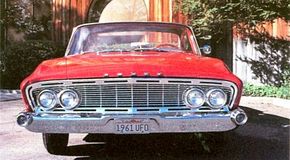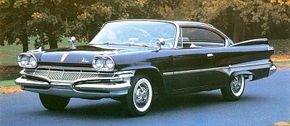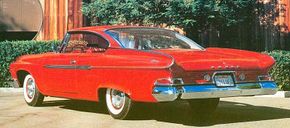Though better known today as a compact, the 1960-1961 Dodge Dart was a full-size car. It was also a huge sales success. The sharp contraction of the medium-price market after 1957 forced Chrysler to pare down from five divisions to just Dodge and Chrysler-DeSoto-Plymouth. This left many Dodge franchises without a companion make for the first time, and they were jealous because the timely new 1960 compact Valiant would be sold only by that "other" division.
Advertisement
But management placated Dodge dealers by granting a greatly expanded 1960 lineup divided between two "senior" series, replacing Royal and Custom Royal, and lower-priced "junior" models to take over for Coronet as full-size Plymouth competitors. This considerably fattened the Dodge catalog, which went from 19 models to no fewer than 35.
Christened Dart, after a finny 1957 Chrysler show car, the new junior line was almost a separate make, with three series, a full range of body styles, and 23 individual models. Seneca was the price leader, followed by Pioneer (which offered a hardtop coupe) and the line-leading Phoenix (which duplicated that and added a convertible too).
Non-wagons spanned the 118-inch wheelbase Plymouth had used since 1957. Wagons rode the 122-inch platform adopted for that year's Dodge and DeSoto (plus Plymouth wagons and the 1959 Chrysler Windsor). The latter also served Dodge's 1960 seniors.
Also common to 1960 Plymouths, Dodges, DeSotos, and Chrysler Windsors were the corporation's famed torsion-bar front suspension and a familiar family of wedgehead V-8s. But chassis were now fully welded to inner body structure-the tighter, more solid monocoque construction that Chrysler called unibody. Per Detroit custom, different exterior sheetmetal set the various makes apart.
Darts probably fared best among Plymouths and Dodges, with modest fins and a busy but not unattractive face. If not the prettiest cars of 1960, they were certainly better looking than the more exaggerated senior Dodges and the equally overdone Plymouths.
Keep reading to learn about the styling and sales success of the 1960-1961 Dodge Dart.
For more information on cars, check out:
- Classic Cars
- Muscle Cars
- Sports Cars
- Consumer Guide New Car Search
- Consumer Guide Used Car Search
Advertisement


